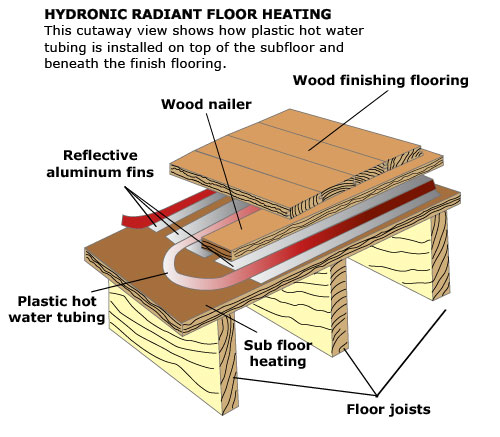

Air distribution systems take up more space and can end up more costly, all things considered. Here is the point: as far as energy efficiency, comfort, noise levels and reduction in construction space requirements and cost, nothing beats radiant systems. The “point” of hydronic cooling and heating Passive chilled beams and chilled ceilings require other forms of ventilation that manages the relative humidity of the spaces. It's important not only for ventilation loads to be managed but also CO2 concentrations, and relative humidity must be removed from the air in another fashion.Īctive chilled beams handle this effectively because they are supplied with a requisite amount of fresh air that is already been sufficiently dehydrated through the HVAC systems handling the requisite ventilation air. Larger buildings use dedicated outdoor air systems, smaller ones can use exhaust recovery ventilators of many different varieties and types.

Of course, fresh air is a necessity in these buildings and can be supplied in any number of methods. These microprocessor-controlled pumps are part of a system that carefully monitors the relative humidity, the associated dew point,and keeps the chilled water lines at a temperature that guarantees safe delivery of radiant cooling to the occupants. As you can see in the diagrams, the temperature of the chilled water is controlled in chilled beams and chilled ceilings very easily using an injection mixing block and a pair of pumps. Much like many other technologically difficulties from years and decades past, this has been solved by modern technology and the reasonable application flow and temperature control. Challenges include the precise control of the chilled water such that it stays above the dew-point temperature. Many of us have heard of or seen “chilled-beam cooling.” Chilled-beam and radiant-panel cooling are similar in many ways. Though this was a remarkably ingenious system, I could see that it was not easily applicable to every situation and could potentially be expensive, even messy. Under the 1-foot finned tube running behind the valence was a condensate gutter or drain that collected the condensation from the 40 F chilled water pipe and channeled the condensate outside. After some investigation, I discovered a 1-inch by 10-inch rough-cut cedar valence (similar to the image) that was installed around the perimeter of each room at a height of eight feet above the finished floor. On this hot summer afternoon, the house was extraordinarily comfortable with the exception of the particular zone that was non-operational. He had geothermal heating and cooling through the use of geothermal water-to-water heat pumps strategically around his beachfront home.Īs a young mechanical professional, I was more than a little surprised to walk around his beautiful home and hear no air movement whatsoever. It was in Clearwater Beach, Florida, at the home of a dentist. I first observed a radiant cooling system in 1992. The missing link, and the most difficult for many to adopt in the industry is that of radiant cooling technology. In addition to the comfort levels provided to the spaces in which radiant in-floor heating is installed, the energy efficiency is superior to forced air systems, as well as high-temperature radiator style systems. There is not a more comfortable form of heating of which I am aware, especially when compared to convection, or a forced-air heating system. Room radiators and in-floor radiant heating has been around for quite some time. This column is focusing on heating and cooling trends that are gaining popularity. While that is an important subject, it’s not actually the focus of this particular piece. Many people are confused about the energy consumption of hydronic heat transfer around the building when compared with refrigerant transport of energy. That is starting to change toward hydronic distribution. Most that have been installed have a forced-air distribution configuration. Geothermal heat pumps (GHPs) are “water-source” heat pumps, coupled with the earth in some fashion. By and large, the best improvements seem to be going toward hydronic distribution system improvements, making water-to-water heat pumps of greater focus.

I was recently speaking on the phone with a major heat pump manufacturer about heating and cooling trends.


 0 kommentar(er)
0 kommentar(er)
